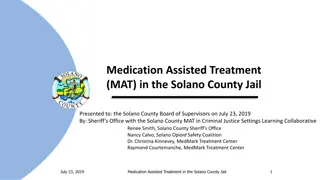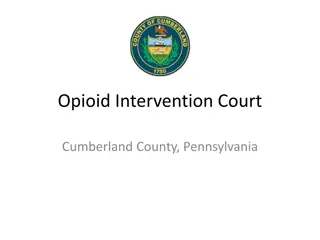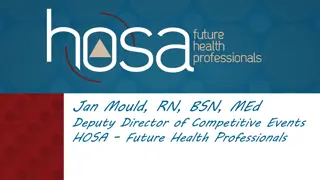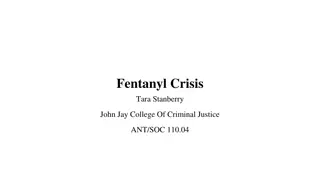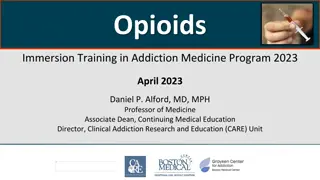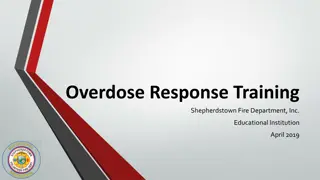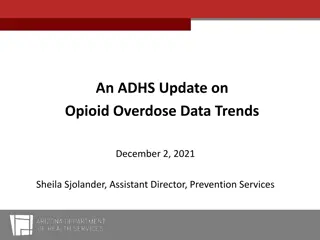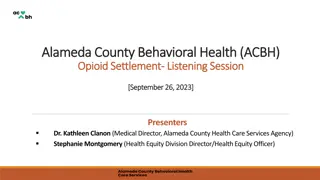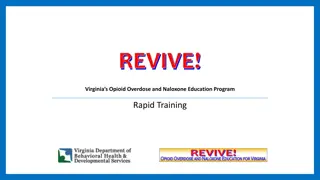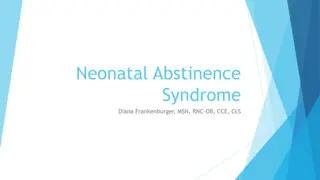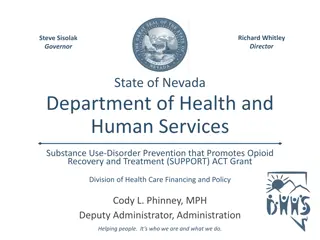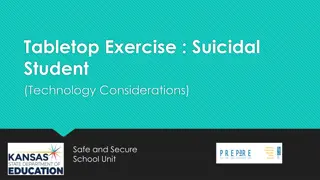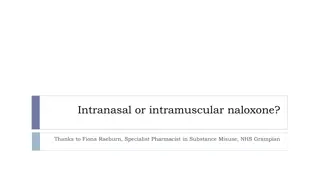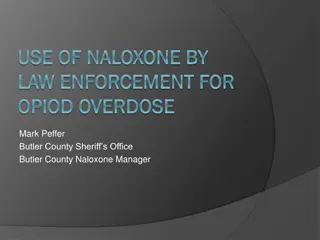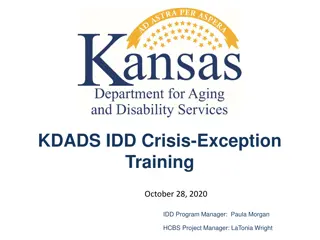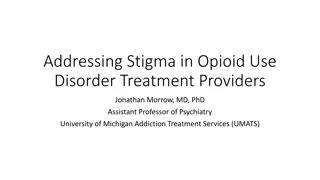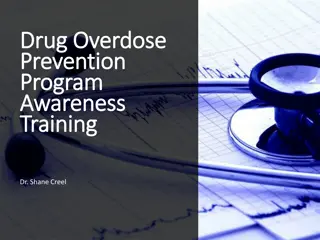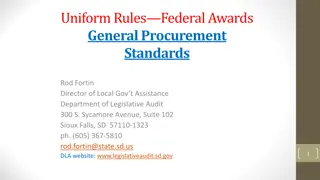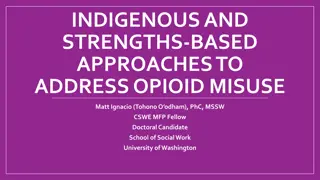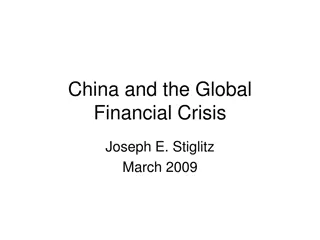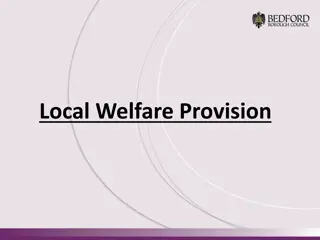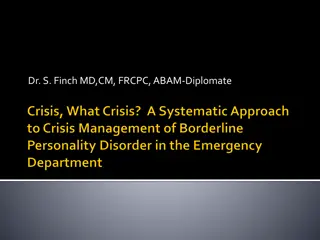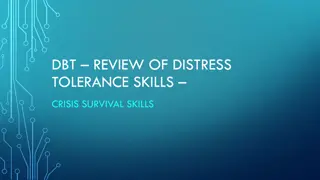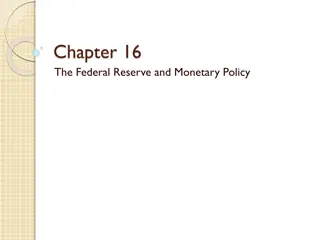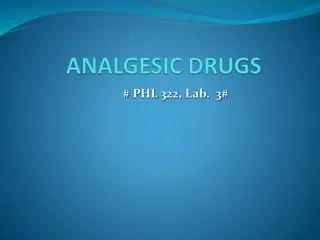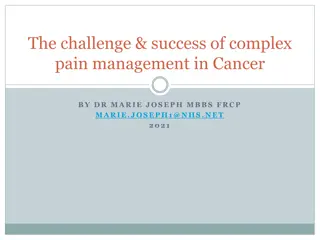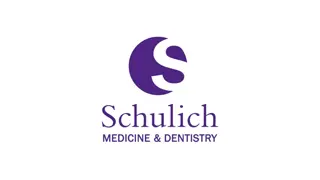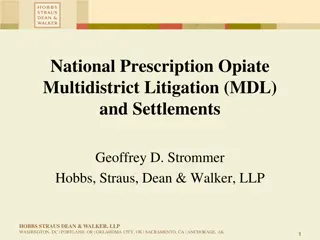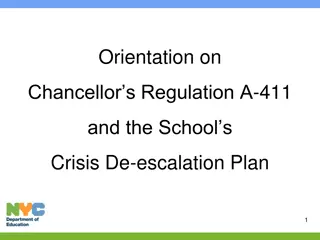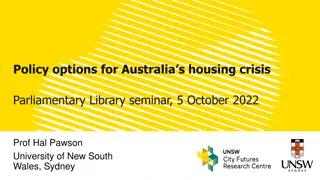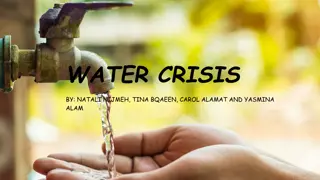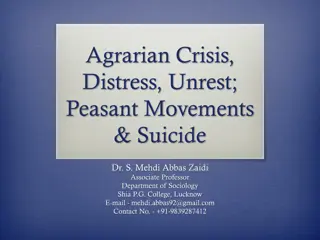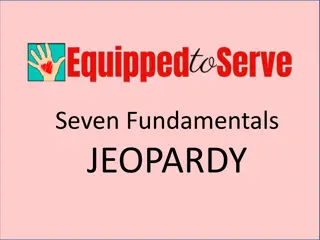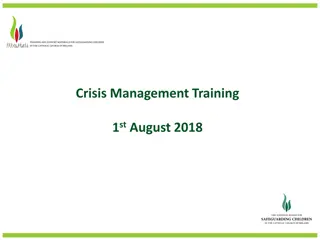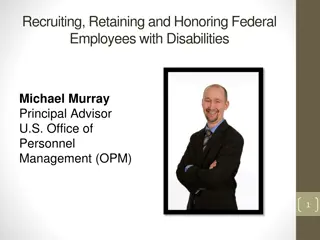Addressing the Opioid Crisis: Next Steps and Federal Resources
The opioid crisis continues to affect millions, with a significant decrease in misuse reported. The fight against this crisis involves federal resources such as grants, MAT programs, and support for prevention, treatment, and recovery services. Evidence-based treatment includes FDA-approved medications like Naltrexone and Buprenorphine/naloxone, along with psychosocial therapies and community support. Progress has been made in addressing prescription pain reliever misuse and heroin initiation.
Download Presentation

Please find below an Image/Link to download the presentation.
The content on the website is provided AS IS for your information and personal use only. It may not be sold, licensed, or shared on other websites without obtaining consent from the author. Download presentation by click this link. If you encounter any issues during the download, it is possible that the publisher has removed the file from their server.
E N D
Presentation Transcript
The Opioid Crisis: Next Steps Elinore F. McCance-Katz MD, PhD Assistant Secretary for Mental Health and Substance Use Substance Abuse and Mental Health Services Administration U.S. Department of Health and Human Services RX Drug Abuse and Heroin Summit April 22, 2019
Opioids Crisis: Millions Continue Misuse PAST YEAR, 2017, 12+ 11.4 MILLION PEOPLE WITH OPIOID MISUSE (4.2% OF TOTAL POPULATION) Significant decrease from 12.7 M misusers in 2015 Hydrocodone misuse down from 6.9M in 2016 + Difference between this estimate and the 2016 estimate is statistically significant at the .05 level. Note: Opioid misuse is defined as heroin use or prescription pain reliever misuse. Note: The percentages do not add to 100 percent due to rounding.
The Fight Against the Opioids Crisis: Federal Resources STR grants to states: $500 million/yr through Cures FY 17 and 18 + $1B FY 19 State Opioid Response (SOR): $1.5B Provide support for evidence-based prevention/education/treatment/recovery services Naloxone access/First Responders/Peers: FY 19: $49M MAT-PDOA: FY 19: $89M Pregnant/post partum women/NAS: FY 19: $29.9M CJ programs with MAT; drug courts and offender re-entry; FY 19: $89M Building Communities of Recovery FY 19: $6M Reinstatement of Drug Abuse Warning Network (DAWN) $10M To address prevention and treatment of other SUDs: Block grants to states FY 19: $1.86B NSDUH continuation with plan for more rapid release of data
What Does Evidence-Based Treatment Look Like? FDA-approved medication (Medication Assisted Treatment (MAT)): for as long as the person benefits from the care Naltrexone: once a month injectable medication, blocks effects of opioids Methadone: long acting, once-daily, opioid from specially licensed programs Buprenorphine/naloxone: long acting, once daily/once monthly, opioid from doctor s offices; available by prescription Medical Withdrawal ( Detoxification ) > 80% relapse rate in the year following treatment High risk for overdose and death when relapse occurs Should not be a stand alone treatment Provide injectable naltrexone to those who request medical withdrawal treatment Addressing Safety: Naloxone dispensing MAT Psychosocial Therapies and Community Recovery Supports Peer Recovery Support Vocational Housing Legal Assistance Transportation Childcare Assistance Counseling Psychoeducation Medical Care Mental Health Care Toxicology Screening Naltrexone Buprenorphine Methadone
Progress on Prescription Pain Reliever Misuse and Heroin Initiation PAST YEAR, 2017, 12+ P = 0.0008 P = 0.0337 + Difference between this estimate and the 2017 estimate is statistically significant at the .05 level. P = 0.0090
Morphine Milligram Equivalents (MME) Prescribed per Month (US) 1.6E+10 1.4E+10 1.2E+10 1E+10 8E+09 27% Decrease since January 2017 6E+09 4E+09 2E+09 0 Jul-17 Jul-18 Sep-17 Aug-18 Sep-18 Aug-17 Mar-17 Mar-18 Jun-17 Jun-18 Dec-17 Dec-18 Jan-17 Feb-17 Nov-17 Jan-18 Feb-18 Nov-18 Jan-19 Apr-17 May-17 Oct-17 Apr-18 May-18 Oct-18
Specialty Treatment for Illicit Drug Use Disorders PAST YEAR, 2015 - 2017, 12+ 358k 242k 235k 603k 260k 221k 227k 453k 491k 346k 122k + 144k + 371k 307k 159k 979k 850k676k + 270k 200k205k + Difference between this estimate and the 2017 estimate is statistically significant at the .05 level. Special analysis of the 2017 NSDUH report.
The Opioids Crisis Continues 11.4 million Americans misusing opioids in 2017 2.1 million Americans with Opioid Use Disorder (OUD) 55% got treatment for heroin use disorder, 21% got treatment for prescription pain reliever use disorder 70,237 drug overdose deaths in 2017, 47,600 (over 2/3) related to heroin and synthetic opioids (e.g.: fentanyl)
What Else Are We Doing at the Federal Level? NIDA/NIH and SAMHSA collaboration on research to identify effective prevention, treatment and recovery interventions to address OUD and reduce opioid-related deaths Work with DEA includes training on OUD and collaboration to help with the development of telemedicine regulations that address needs related to OUD Collaboration with USDA: SAMHSA supplements to Cooperative Extensions to provide training and education on OUD interventions for rural communities USDA/SAMHSA MOU to rehabilitate foreclosed properties in rural areas into recovery housing
What Else Are We Doing at the Federal Level? FDA: Ongoing Commitment to Combat the Crisis The recent passage of the SUPPORT Act has provided the FDA with the authority to: Assist in the development of evidence-based guidelines for opioid prescribing to treat acute pain. Take new steps to reduce exposure to opioid analgesics by helping to ensure that these drugs are appropriately prescribed, with dose, quantity and treatment durations that match the indication. Assess packaging requirements, such as short-duration blister packaging for outpatient dispensing of opioid analgesics.
What Else Are We Doing at the Federal Level? SAMHSA: Technical Assistance and Training Evidence-Based Practice Repository in NMHSUPL National Technical Assistance/Training Centers: State Targeted Response to Opioids, Providers Clinical Support System for Medication Assisted Treatment, Clinical Support System for Serious Mental Illness, National Child Traumatic Stress Network, National Center on Substance Abuse and Child Welfare, Center for Integrated Health Services, Veterans, GAINS (Criminal Justice), Disaster, Social Inclusion/Public Education, SOAR, Suicide Prevention, Eating Disorders, Privacy Combined Efforts at the Regional, State, and Local Levels Oriented to All Health Professionals Regional Prevention, Addiction, Serious Mental Illness, Collaborating Technology Transfer Centers Region 8 Region 9 Region 10 Region 3 Region 2 Region 1 Region 6 Region 7 Region 4 Region 5 National American Indian/Alaska Native TTC National Hispanic/Latino TTC
What Else Are We Doing at the Federal Level? Technical Assistance and Training on Evidence-Based Practices: PCSS-Universities: embedding the DATA waiver training into pre- graduate practitioner education Training on assessment/treatment of SUDs by profession Technical assistance on providing treatment for opioid use disorder including medication during incarceration Guidance on Recovery Housing SAMHSA/NIDA-sponsored review of strong evidence base for medication for treatment of opioid use disorder from the National Academies of Science, Engineering and Medicine
Greater Numbers Receiving MAT Methadone: 381,867 (March, 2017) Buprenorphine: 690,473 - 667,408 (December, 2018) unique patients through retail or mail order prescriptions 23,065 (March 2017) (from Opioid Treatment Programs) Injectable Naltrexone (Vivitrol): - 74,370 (2018) (data per Alkermes, 2019) Approximately 1,146,710 patients are currently receiving MAT
Summary Opioid crisis will remain a key focus for HHS Partnerships forged and continuing: federal/states/stakeholder groups/philanthropists Outreach to the American people: Prevention interventions Make evidence-based care widely available and easily accessed Provide the recovery supports that help to rebuild lives and strengthen our communities
Thank You SAMHSA s mission is to reduce the impact of substance abuse and mental illness on America s communities. Findtreatment.samhsa.gov www.samhsa.gov 1-877-SAMHSA-7 (1-877-726-4727) 1-800-487-4889 (TDD)


